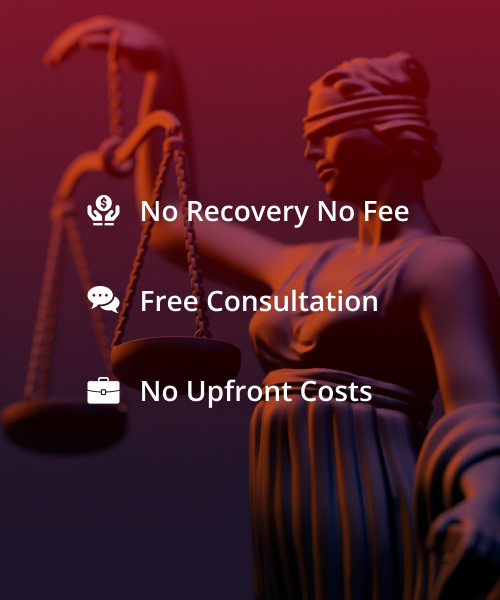- Free Case Evaluation: (305) 577-3777 Tap Here to Call Us
Deep Vein Thrombosis Following Orthopedic Surgery
Deep Vein Thrombosis (DVT) is the formation of a blood clot in a deep vein, usually in the legs. These clots, also known as a thrombus, can detach and travel to the lungs, causing severe injury or death (pulmonary embolism).
Virchow’s Triad
Briefly, it is important to understand the process by which clots can form. In the 1850’s, a German doctor, Rudolph Virchow, studied the factors leading to blood clots and developed a triad of factors. “Virchow’s Triad” consists of the 3 likely factors that lead to the development of a deep vein thrombosis. They are:
- Local trauma to the vessel wall
- Hypercoagulability
- Stasis
Simply put, venous stasis can be considered a decreased blow flow rate; hypercoagulability can be an increased tendency to clot and changes to the blood vessel wall from injury can actually change the biochemical pathways which activates the clotting cascade.
When considering orthopedic surgery, especially such procedures as total hip replacement, total knee replacement, lower extremity trauma surgery, and joint repair, among other procedures, it is easy to demonstrate how the principles of “Virchow’s Triad” can come into play.
In the case of a traumatic injury, frequently vessels are damaged or crushed. Most surgical patients will have periods of immobilization. Frequently, tourniquets are used during surgical procedures. Following surgery, patients will refrain from weight-bearing or other movements. Each one of these could lead to the development of a DVT and it’s potentially fatal counterpart, a pulmonary embolism.
The Deep Vein Thrombosis Prophylaxis Debate in Orthopedic Surgery
Much attention is given to the topic of deep vein thrombosis prophylaxis in orthopedic surgery. This means the prevention of DVT, either in preparation for surgery or following surgery. It is universally accepted that some form of anti-coagulation is indicated in procedures such as a total hip replacement and total knee replacement. There is extensive disagreement on the need for chemoprophylaxis or mechanical methods of preventing the formation of DVTs in orthopedic surgical patients.
Routine anticoagulation can be achieved through such agents as Heparin, Coumadin, Fondaparinux, or other chemoprophylatic agents. While certain medical societies have published guidelines regarding the need for prophylaxic antithromobolitics in total knee and hip replacements, there is a great degree of controversy among chest physicians, orthopedic surgeons, and cardiologists regarding the need for mandatory antithrombolitic prophylaxis in other orthopedic surgical procedures. Apparently, the potential risks of these therapies may outweigh the benefits they impart. Oftentimes, the patient will develop medical difficulties such as increased bleeding and other significant side effects from chemoprophylaxis agents. The most severe of these complications can actually include pulmonary embolus or heparin-induced thrombocytopenia, which can be limb or life threatening.
Patients Most at Risk of Developing a DVT
The orthopedic surgeon must evaluate the patient’s risk factors in order to determine whether or not chemoprophylaxis agents should be utilized in their surgical patients. The American College of Chest Physicians published an evidence-based clinical practice guideline regarding DVTs. This paper, entitled “Antithrombotic therapy and prevention of thrombosis”, 9th edition, American College of Chest Physicians Evidence-Based Clinical Practice Guidelines, Chest, 2002, discusses prediction probability methods for DVTs. One widely used criterion to measure DVT probability actually scores risk factors in order to create a probability range. Some of the criteria used to determine risk are whether or not the patient has or had the following:
- Active cancer
- Paralysis
- Paresthesis or recent cast immobilization of lower extremities
- Major surgery requiring regional or general anesthetic in the past 12 weeks or was recently bedridden for greater than 3 days
- Recent long-distance travel
- Localized pain along distribution of deep venous system
- Swelling of entire leg and/or calf greater than 3 centimeters
- Pitting edema
- Collateral superficial veins
- Previously documented DVT or PE
Most studies seem to correlate the increased incidence of deep vein thrombosis with non weight-bearing status and immobilization after surgery.
There are other methods of treatment and prevention of deep vein thrombosis besides medication. Weight-bearing, physical activity, mechanical devices including pneumatic compression devices, compression garments, and, in rare cases, internal filter placement.
It is essential for the orthopedic surgeon performing lower extremity surgery to consider the risk of DVT. The more that the physician and patient understand this complex problem, the better the exchange of information needed to assess the risks to that particular patient. Failure to consider the possibility of DVT and/or failure to recognize the existence of a DVT post-surgically can lead to disastrous consequences.
About Jeffrey R. Davis, P.A.
Jeffrey R. Davis, P.A. represents victims of medical negligence throughout the state of Florida. The firm has a specific interest in working with cases involving medical mishaps due to the failure to avoid and/or timely recognize the development of deep vein thrombosis and pulmonary embolism. If you or your loved one has experienced this type of medical difficulty or damage following orthopedic surgery, please consider consulting Jeffrey R. Davis, P.A. to fully explore your options.









